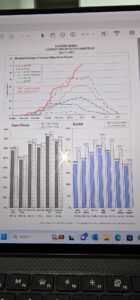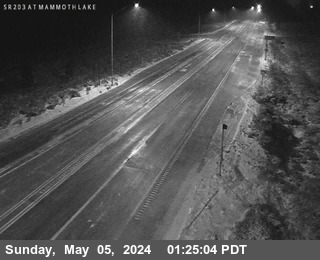Brought to you by Howard Sheckter
Cold Unsettled Pattern Underway….Light accumulations into tonight…Strong Winds….Moderating Temps Wednesday….Easter weekend very nice with above normal Temps…..Progressive Pattern continues the following week…
Monday April 3, 2023
4/5/2023
Historic Water Content On The Pass 102.7 247% of normal. – 16% greater than the Winter of 1969 (86.5).
The Southern Sierra is 305% of normal; April 1st
Historic WInter by a long shot!
The Winter of 2023 beats them all here in Mammoth Lakes
According the DWP; the following in order, are the biggest Winter’s here in Mammoth Lakes, measuring the water content on Mammoth Pass.
- Winter of 2023 247% of normal April 4th 102.7 inches of water
- ” 1969 203% April 1st 86.5 inches of water
- ” 1983 196% ” 83.7 inches of water
- ” 2017 193% ” 82.3 inches of water
- ” 1938 176% ” 75.2 inches of water
- ” 1952 173% ” 73.7 inches of water
Of interest is that the winter of 1952 was not as impressive here in Mammoth as 5 larger winters.
 _______________________________________________________________________________________________________________________________________________________________________
_______________________________________________________________________________________________________________________________________________________________________
4/4/23 (Always click on header for correct format)
Updates on our short, medium, and long range:
Our cold spell will shift eastward tomorrow with the beginning of milder temperatures. High temperatures will climb into the 50s by Easter Sunday and warm further that following Monday.
A weather system will pass to our north this Thursday night into Friday morning bringing some clouds and wind.
It is interesting to note that the long wave ridge bringing us our warmup over the weekend will develop over the Rockies. It forces a short wave well off shore to become positive tilt and pick up a lot of subtropical moisture from the SW. During the Winter, a vigorous storm would pick this up for a major storm here in the high country. Not this time, as although there will be periods of cloudiness, it will be a milder weekend and dry! This is a case whereby you can have plenty of moisture but without any lifting mechanisms, you do not get precip. The IWV and IVT plume forecast from the GEFS shows this as a weak “AR” this weekend.
Longer Range shows a few transitory systems to our north mid-week next week with more wind and clouds for our area. Those storms will mainly affect Northern CA and the Pac NW. Beyond mid-week next week, the weather looks to return to unsettled, with the possibility of storms being in the light to possibly moderate snowfall range. The pattern may continue through that following week. The Dweebs want to stress that Northern CA will likely get the brunt of most of these weather systems that may affect our area the 3rd week of April. Light snow (1-6 inches) Moderate Snow (6-18 inches)
EL Nino:
It is expected that EL Nino will come on moderate to strong later this year, like late Summer and Fall. El Ninos often provides for a warm dry Fall. Most wet El Nino’s tend to bring winters that begin later in the year.
Not all Strong El Nino’s are wet for Central CA. The Modoki El Nino in the past had produced some dryer than normal winters and several winters that were 80% to 95% of normal precip. But a few were wetter than normal. There is no indication that this will be a Modoki El Nino at this time as SSTAs are already much warmer than normal off the Central American coast. The Modoki is characterized by warmer than normal SSTAs in the Central EQ Pacific, and normal to cooler than normal off the Central American Coast. Currently, we are in the Spring Barrier for prediction. Better ENSO prediction will occur this Summer of what this El Nino is likely to be.
El Nino from a teleconnection favors a positive height anomaly over Western Canada and offshore. (+PNA) La Nina (-PNA) favors a negative height anomaly in the same area. High pressure aloft over the far west is usually associated with drier than normal precip for the Pacific NW and “Only When” the upper jet gets strong enough across the pacific that it can undercut the ridging well to the north. When the upper jet gets stronger later in the year, its undercuting favors Southern California the most. Stronger El Ninos can affect our state further north as well. One comment about Strong Wet El Ninos in California is that their AR’s usually have higher freezing levels and thus can bring more rain to higher elevations.
Dr Howard and the Dweebs……….:-)
_________________________________________________________________________________________________________________________________________________________________________________________________________________
4/3/23
A return of cold weather occured today. Monday has snow showers and strong winds over the upper elevations. High temperatures have returned to the 20s in town and lows at night in the single digits and teens. A few more inches of snow are possible this evening.
Of interest was the Katabatic winds that developed over Owens Valley yesterday. High temps were some 32 degrees warmer as NW Flow under the Front Rt exit region provided Adiabatic heating and down sloping for the Bishop area. Today, Bishop will not be so lucky with highs in the 40s and strong winds.
I wanted to remind everyone that early Spring is still a time for significant snow producing weather systems. However, the Global Models will become very tricky because of the large-scale differential heating beginning to take place, changing thermal gradients from the oceans to the continent. (CONUS) Heating over the West tends to increase the strength of the upper jet on the east side of Trofs which tends to shift these lows more to the east sooner. Northern CA does better precipitation wise as we get further into the month of April. WX systems tend to Cut Off from the westerlies when they approach the CA Coast. Thus more blown forecasts for the Weatherman, the further we get into Spring! 😉
Latest Global models are touting a storm for the Central West Coast the middle of the month. The odds are higher for significant snowfall for the Northern Sierra.
The New 12Z American Models have a significant long wave Trof developing just off the west coast early the following week which deepens further between the 12th and the 17th. Since the European 360 ENS is not out yet….. The deterministic run suggests a modest system for the Central Sierra, the middle of next week. The Euro is weaker next week with the mid-week system, than the GFS for our area. Thus….It’s too early for a judgement call on whether we are going to get clobbered again later next week. I would say that the Northern Sierra has a better chance at this point. Stay tuned…………….
Of Importance is the current situation on the propane systems on the structures in town. As many locals know, we have had two major propane related explosions already. Back in the 1990s, we had a major issue with propane explosions in town and the TOML changed the building codes to help compensate for the issues at that time. This winter has been highly unusual, to say the least with roof shoveled snow raising the snow levels to the roof base in some cases.
Unusual Winter:
- All-time record April 1 Water on Mammoth Pass since 1920 according to the DWP
- Being that the winter was so exceptionally cold, there was little snowmelt in town which allowed the snowpack in town to grow up and be record setting.
- The many AR storms were mostly snow in town.
- All this has challenged the snow removal systems of the TOMLs, and pushed property owners of single-family residents, condominium projects, commercial and apartments to financial extremes in many ways.
From a propane hazard issue, all property owners should look around their structures and find the reflector on their building. The reflector of various colors is located up high on the wall, which is above a small shed, covering the propane regulator and shut off valve. The reflector would most likely be located on a wall away from the natural roof shed area. Find the reflector, make sure the regulator, and shut off valve are not buried, being careful not to compromise the regulator when freeing that area from snow and ice. It is always best to have a professional do that kind of work. If you smell propane get out of your structure and call 911 immediately.
For more details, youtube has a great video made by the MLFD for all the details. Go to YouTube; Search and type in MLFD. the Video is there.
Dr Howard and the Dweebs……….:-)




